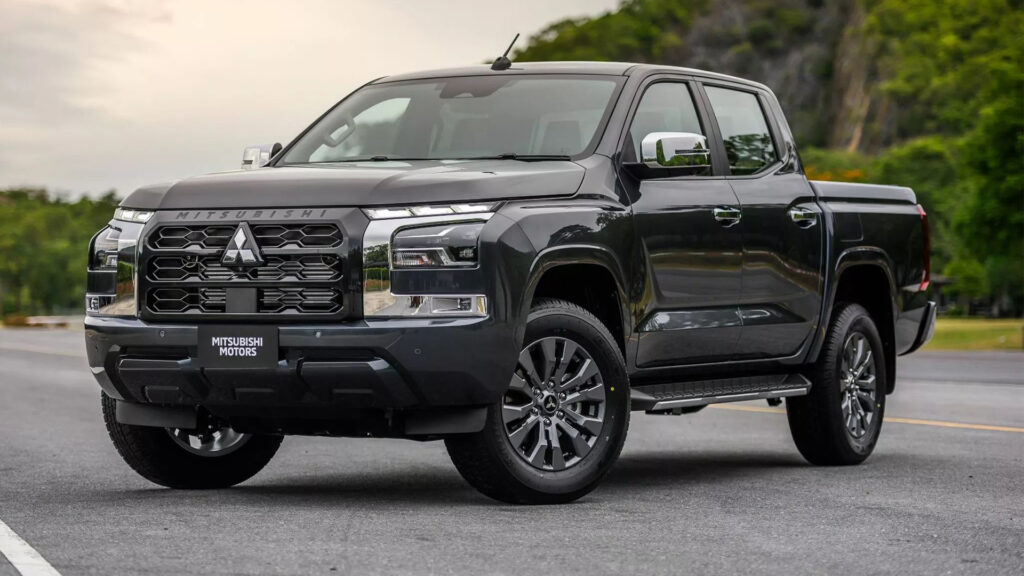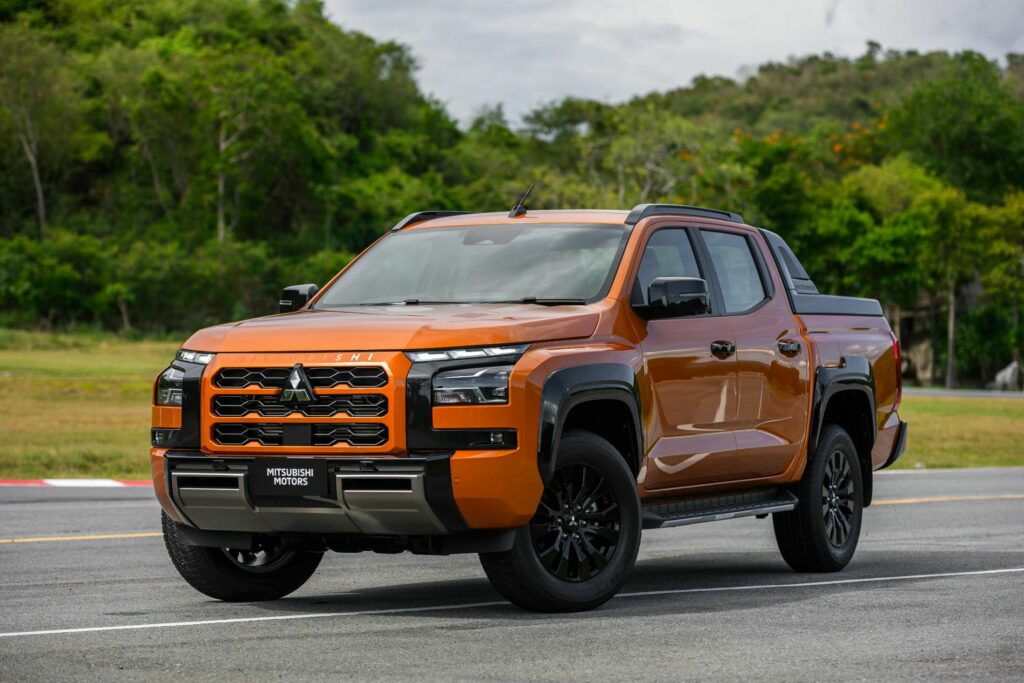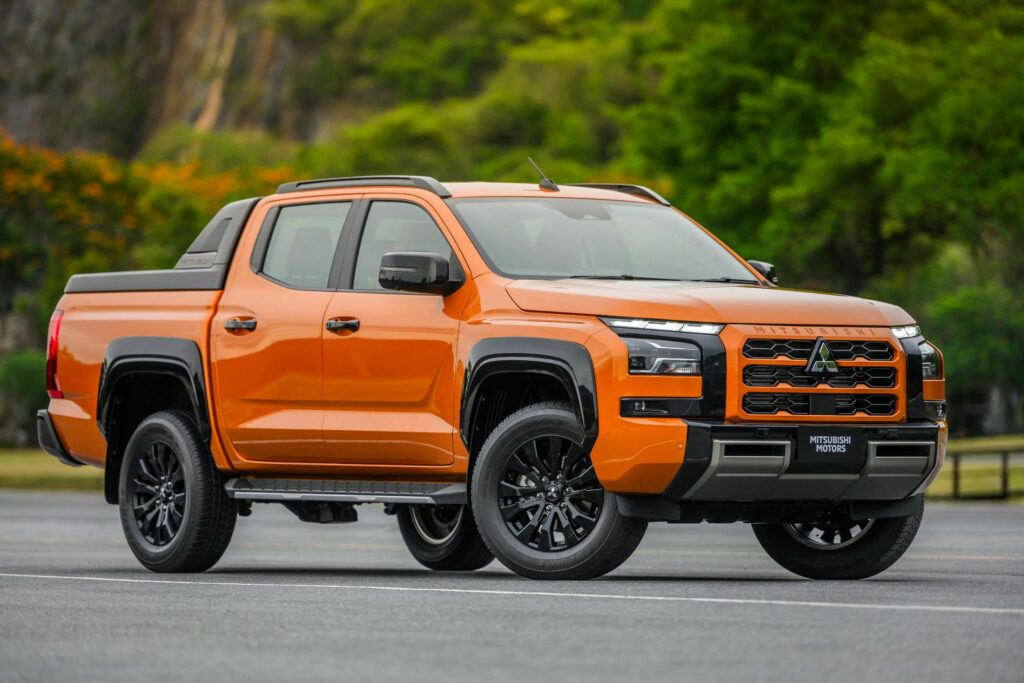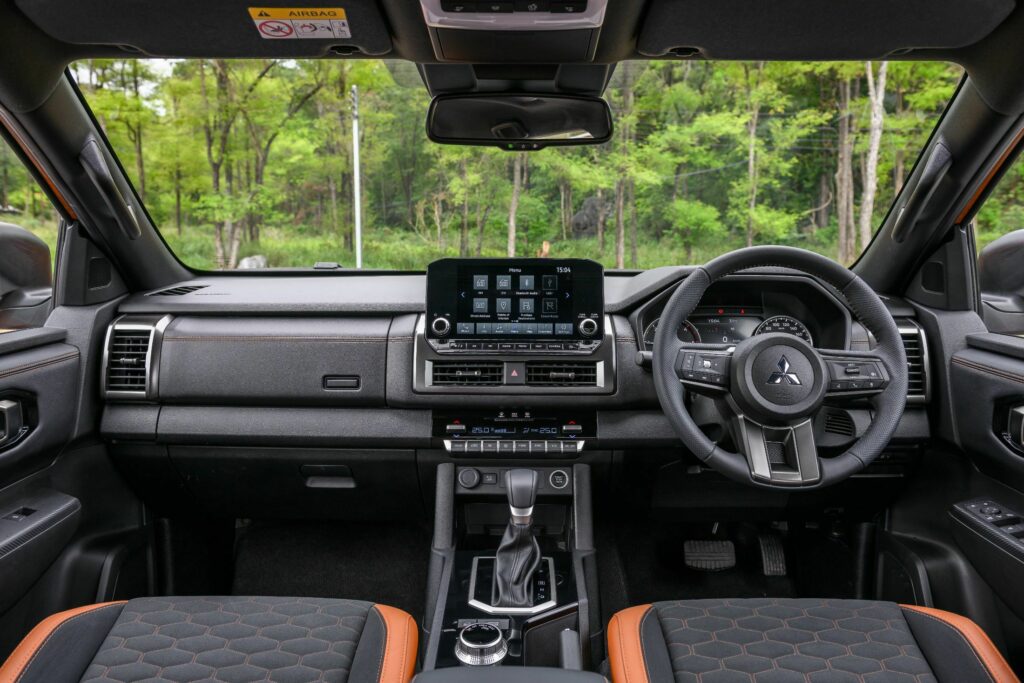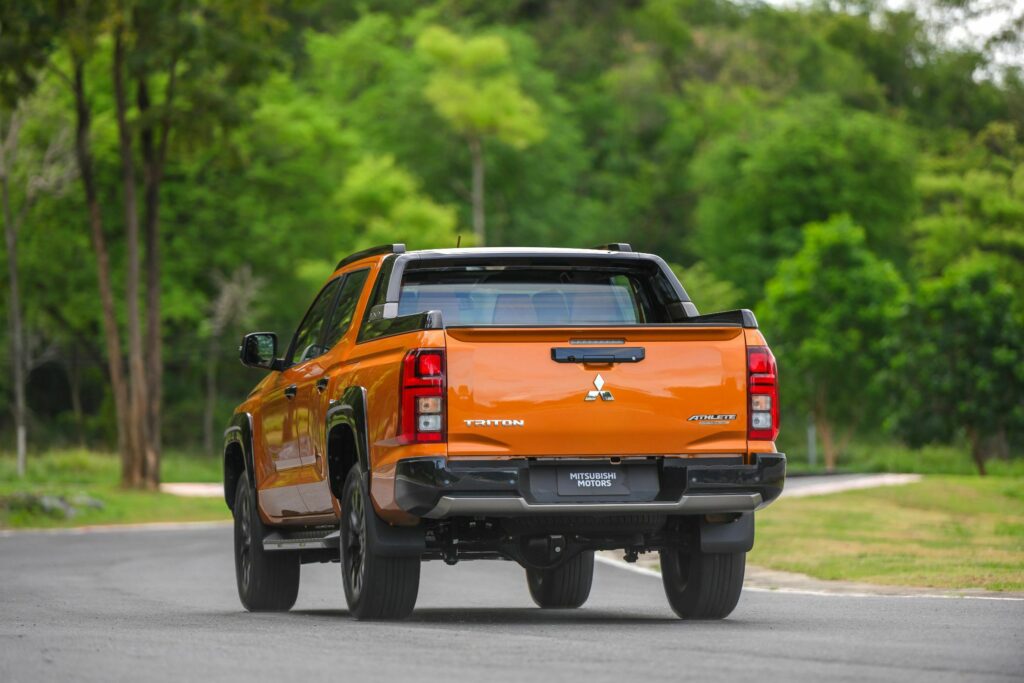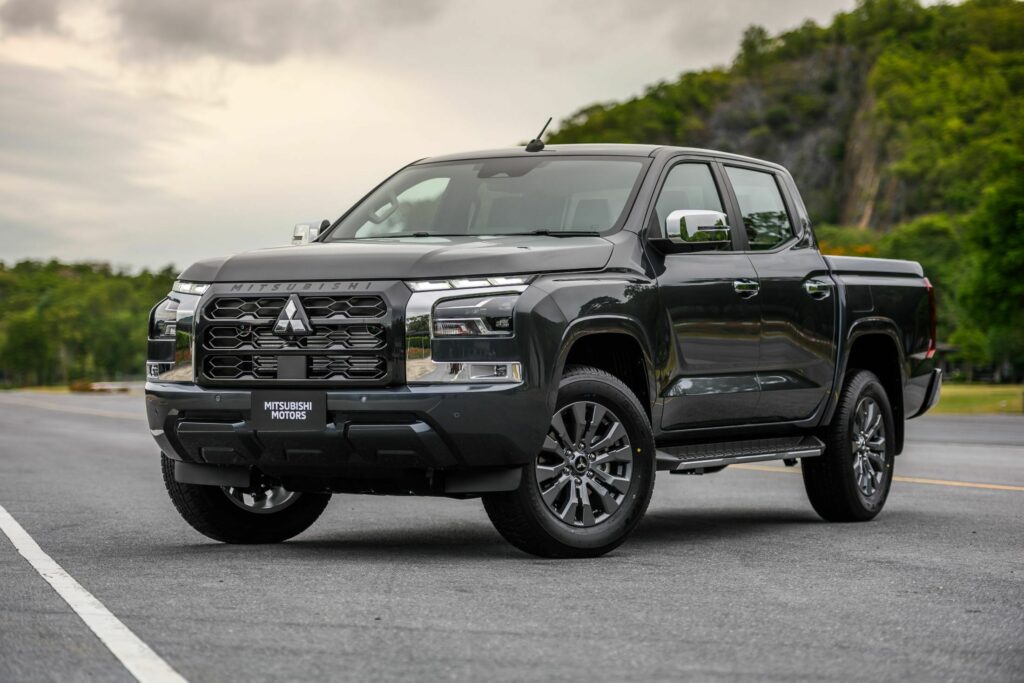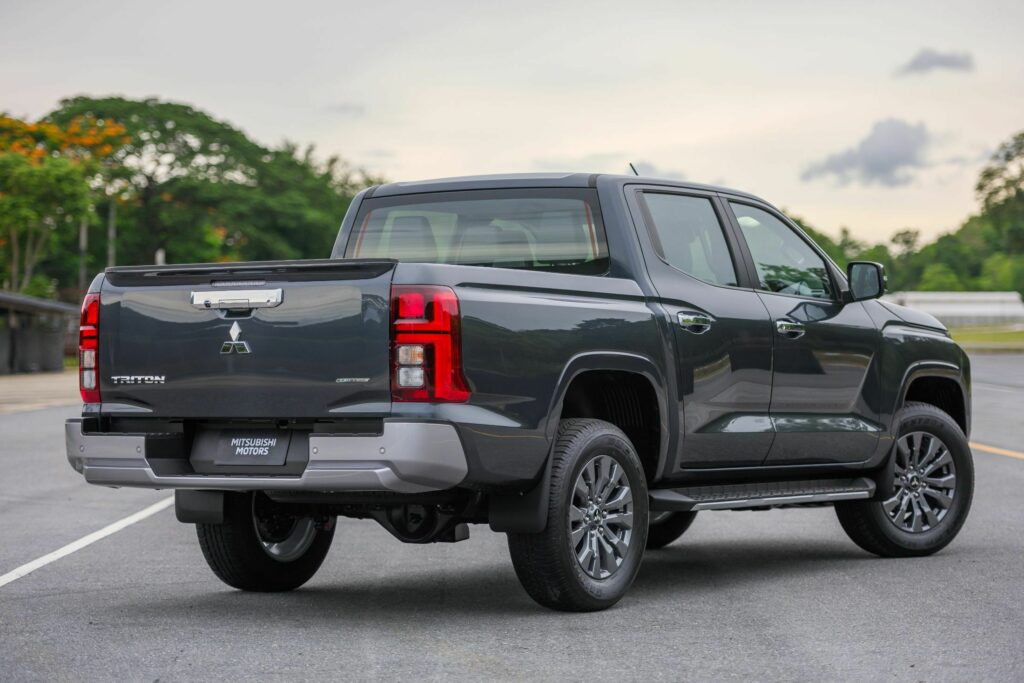Shortly after the latest-generation Mitsubishi Triton / L200 was unveiled at an event in Thailand, details and specifications for the Australian model have just been announced. Those Triton trucks bound for Australia will hit the production line in December and should arrive in showrooms in February 2024.
The Triton has long been one of Australia’s best-selling pickup trucks and comfortably the brand’s best-selling vehicle. In global markets, Mitsubishi will offer the new Triton with a 2.4-liter four-cylinder twin-turbocharged diesel producing 148 hp (110 kW) and 243 lb-ft (330 Nm) in base spec, 181 hp (135 kW) and 317 lb-ft (430) in the mid-spec model, and 201 hp (150 kW) and 347 lb-ft (470 Nm) in the flagship model. All Triton models sold Down Under will come standard with this 201 hp version of the 2.4-liter.
Read: 2024 Mitsubishi Triton Taking The Fight To Toyota Hilux And Ford Ranger
From launch, all Triton models will be offered with a six-speed automatic transmission but a six-speed manual will also be available at a later date. The local range will kick off with the entry-level GLX fitted with a 4×2 drivetrain and offered in double cab guise. All other Triton variants will come standard with 4×4.
These models will start with the GLX+ sold exclusively in club cab guise while the GLX 4×4 will serve as the double cab alternative. The two higher-end models consist of the GLS 4×4 and GSR 4×4, both sold in double cab configurations. Mitsubishi will equip GLX and GLX+ models with a selectable 4×4 system and GLX+ models will get a rear differential lock. Meanwhile, the GLS and GSR variants have been equipped with Mitsubishi’s Super Select 4WD II system that includes a 4WD high-range mode that doesn’t require the center differential to be locked. Cab chassis variants will be offered post-launched.
While local pricing details have not yet been announced, the car manufacturer has confirmed that the new Triton has a braked tow capacity of 3,500 kg (7,716 lbs), a 400 kg (882 lb) increase from the previous-generation model.







